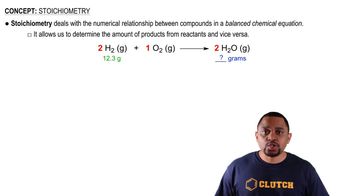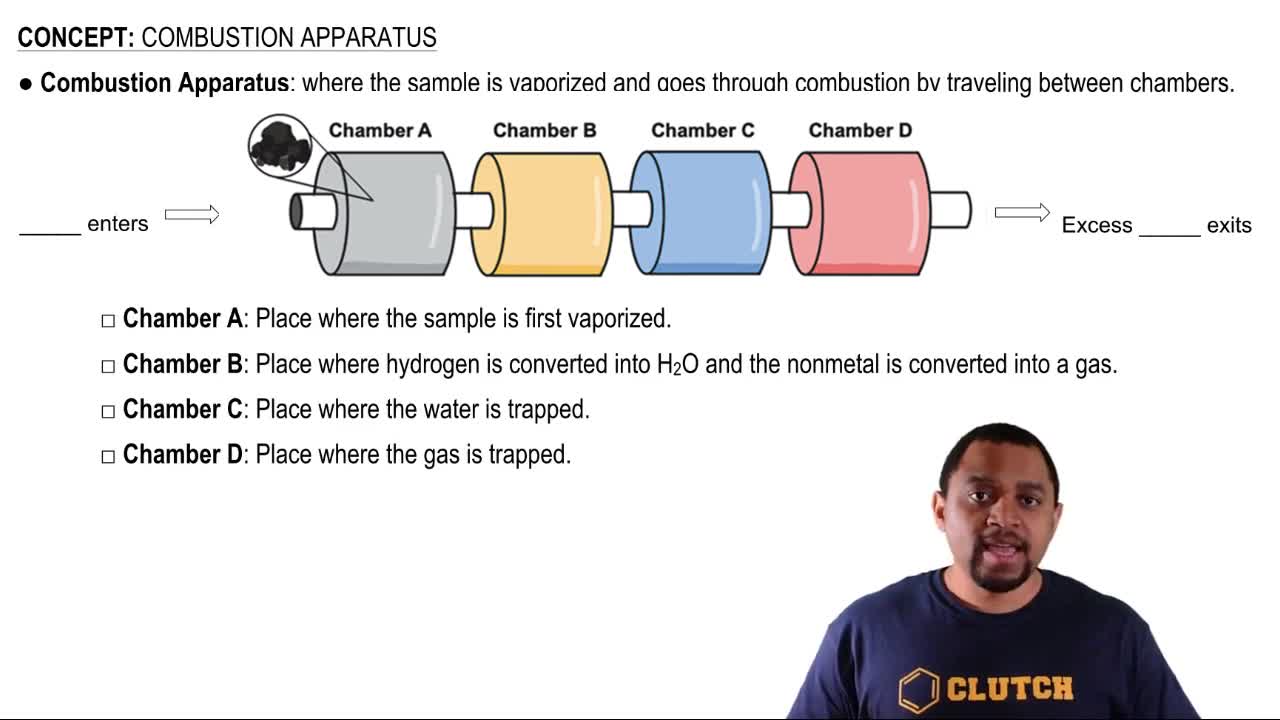(b) Menthol, the substance we can smell in mentholated cough drops, is composed of C, H, and O. A 0.1005-g sample of menthol is combusted, producing 0.2829 g of CO2 and 0.1159 g of H2O. What is the empirical formula for menthol? If menthol has a molar mass of 156 g/mol, what is its molecular formula?
When a mixture of 10.0 g of acetylene 1C2H22 and 10.0 g of oxygen 1O22 is ignited, the resulting combustion reaction produces CO2 and H2O. (c) How many grams of C2H2 are present after the reaction is complete?

Verified Solution
Key Concepts
Stoichiometry

Limiting Reactant

Combustion Reaction

Nitrogen 1N22 and hydrogen 1H22 react to form ammonia 1NH32. Consider the mixture of N2 and H2 shown in the accompanying diagram. The blue spheres represent N, and the white ones represent H. (d) If so, how many of which type are left over?
How many N2 molecules are left over?
When a mixture of 10.0 g of acetylene 1C2H22 and 10.0 g of oxygen 1O22 is ignited, the resulting combustion reaction produces CO2 and H2O. (c) How many grams of CO2 are present after the reaction is complete?
Nitrogen 1N22 and hydrogen 1H22 react to form ammonia 1NH32. Consider the mixture of N2 and H2 shown in the accompanying diagram. The blue spheres represent N, and the white ones represent H. (d) Are any reactant molecules left over, based on the diagram?
The reaction between reactant A (blue spheres) and reactant B (red spheres) is shown in the following diagram:
Based on this diagram, which equation best describes the reaction? (a) A2 + B¡A2B (b) A2 + 4 B¡2 AB2 (c) 2 A + B4¡2 AB2 (d) A + B2¡AB2
The following diagram shows the combination reaction between hydrogen, H2, and carbon monoxide, CO, to produce methanol, CH3OH (white spheres are H, black spheres are C, red spheres are O). The correct number of CO molecules involved in this reaction is not shown. (a) Determine the number of CO molecules that should be shown in the left (reactants) box.
